Top 10 Treasures of Ancient China
With thousands of years of continuous history, China is one of the world’s oldest civilizations with numerous ancient treasures. These treasures are forever shinning pearls of the country and embodiment of the wisdom of ancient Chinese people. Here is a list of the top 10 Treasures of Ancient China which you can mostly appreciate in Palace Museum in Beijing and Taipei.
1. Mao Gong Ding – 毛公鼎
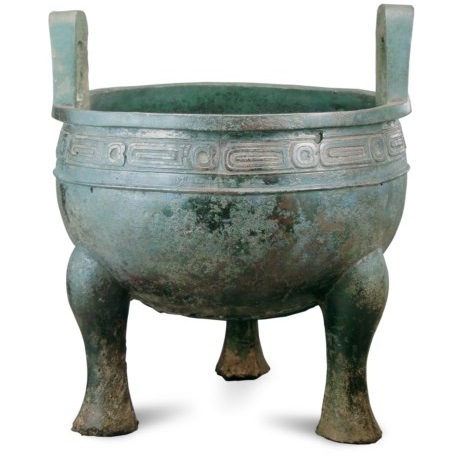 Period: West Zhou Dynasty (1046–771 BC)
Period: West Zhou Dynasty (1046–771 BC)
Location: National Palace Museum in Taipei
It was unearthed in 1851 during the Qing Dynasty (1644-1911) from Mount Qi in Shaanxi Province. The characters cast inside the bowl of the Cauldron, consisting of 500 characters arranged in 32 lines, is the longest bronze inscription in the world.
2. Ju Ware Narcissus Planter 汝窑天青无纹椭圆水仙盆
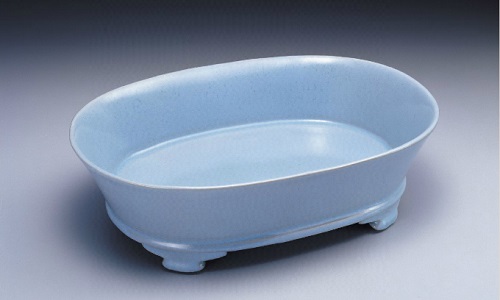 Period: Northern Sung Period (960-1126)
Period: Northern Sung Period (960-1126)
Location: National Palace Museum in Taipei
Ju Ware Narcissus Planter is known as the only narcissus planter without any crackle to its glaze. This lustrous, elegant aesthetic, and the harmonious effect it produced, was much sought after during the Song dynasty.
3. Timely Clearing After Snowfall 快雪时晴帖
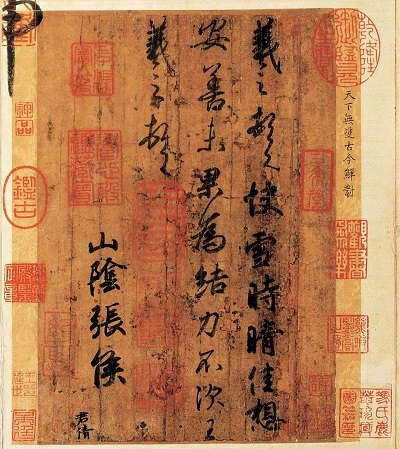 Period: Jin Dynasty (265-420)
Period: Jin Dynasty (265-420)
Location: National Palace Museum in Taipei
Timely Clearing After Snowfall is a 28-character calligraphy work by Wang Xizhi (303-361), a Chinese calligrapher traditionally referred to as the Sage of Calligraphy. It is the only piece of his original work that still exists today.
4. Complete Library of the Four Treasuries 文渊阁四库全书
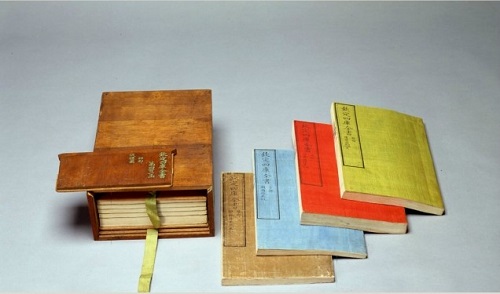 Period: Qing dynasty (1644-1911)
Period: Qing dynasty (1644-1911)
Location: National Palace Museum in Taipei
Complete Library of the Four Treasuries was ordered by the Qian Long Emperor (1736-1795) of Qing dynasty and was edited under imperial decree by Zhu Yun. It is a collection of major literary works produced in China over successive dynasties and comprises over 3,400 titles bound in more than 36,000 volumes.
5. Bronze Chariots and Horses 秦皇铜车马
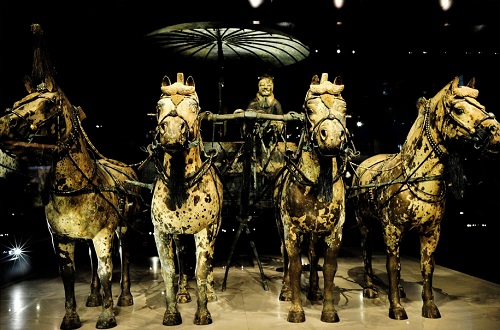 Period: Qin Dynasty (221–206 BCE)
Period: Qin Dynasty (221–206 BCE)
Location: Museum of the Terracotta Warriors and Horses of Qin Shihuang
Bronze Chariots and Horses are the biggest items of bronze ware ever found in the world. They were unearthed in December 1980, about 20 m (65.62 ft) east of Emperor Qin Shihuang’s mausoleum.They were supposed to serve as the vehicle for the emperor’s inspection tours in his afterlife.
6. Sage King Yu Controlling the Flood 大禹治水玉山
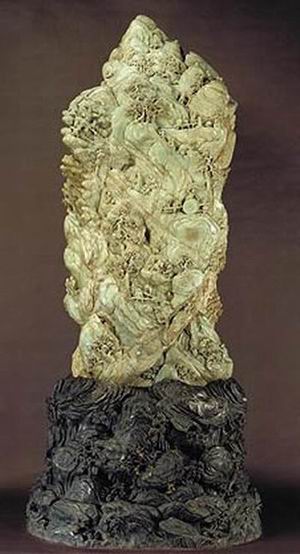 Period: Qing dynasty Qing Dynasty (1644-1911)
Period: Qing dynasty Qing Dynasty (1644-1911)
Location: Palace Museum
The jade sculpture depicts an ancient tale of the legendary king Yu the Great (ca. 22nd century BCE), who was charged to prevent flooding. It is engraved with trees, caves, cliffs, and laborers who are working feverishly to cleave the mountain to prevent a flood.
7. Along the River During the Qingming Festival 清明上河图
 Period: Song Dynasty
Period: Song Dynasty
Location: Palace Museum
Along the River During the Qingming Festival is a panoramic painting by Zhang Zeduan (1085–1145). It depicts the daily life of people from the Song Dynasty capital, Bianjing, today’s Kaifeng in Henan Province. In the 5.28-meter long picture, there are 814 humans, 28 boats, 60 animals, 30 buildings, 20 vehicles, nine sedan chairs and 170 trees drawn.
8. Marble Standing Owl 大理石枭形立雕
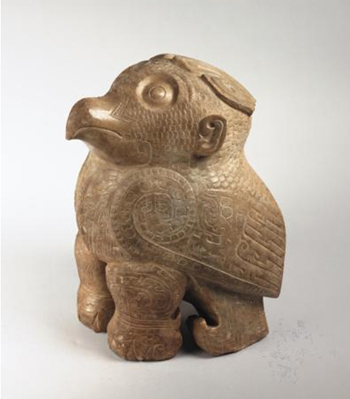 Period: Shang Dynasty (1600 -1050 BCE)
Period: Shang Dynasty (1600 -1050 BCE)
Location: The Institute of History and Philology
This marble standing owl was excavated in the Xibeigang, Anyang, Henan Province. The shape of the white owl is vivid. This owl should be the first class artifact among the relics from the Xibeigang site.
9. Jin Xie Liu Zhen 金薤留珍
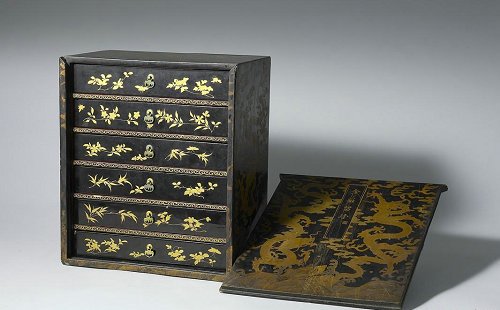 Period: Qing Dynasty (1644-1911)
Period: Qing Dynasty (1644-1911)
National Palace Museum in Taipei
Jin Xie Liu Zhen is five wooden boxes of ancient seals collected by Emperor Qing Qianlong. Inside there are 1291 imperial seals in total. These seals can date back from the Shang Dynasty to the Ming Dynasty. All the seals are made of copper.
10. Tibetan Dragon Sutra 龙藏经
 Period: Qing Dynasty (1644-1911)
Period: Qing Dynasty (1644-1911)
National Palace Museum in Taipei
Tibetan Dragon Sutra was hand-written in gold ink and commissioned by Emperor Kangxi of the Qing dynasty in 1669. This voluminous collection of manuscripts are kept in 108 cases. The front and back sutra boards are decorated with 756 color-painted Buddhas and inlaid with jewelry, covered by sutra screens embroidered in five colors for protection.

